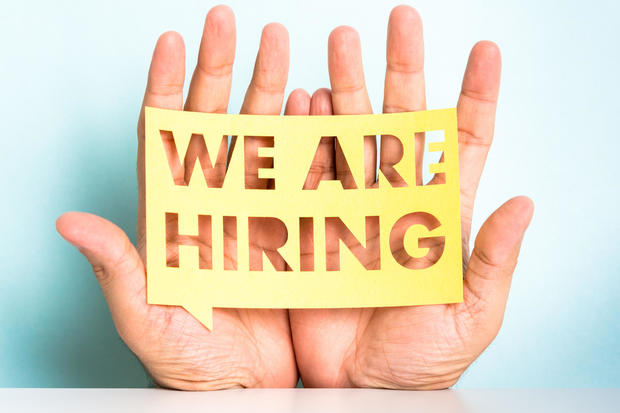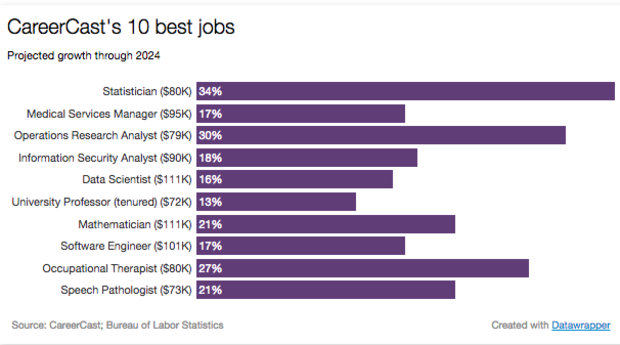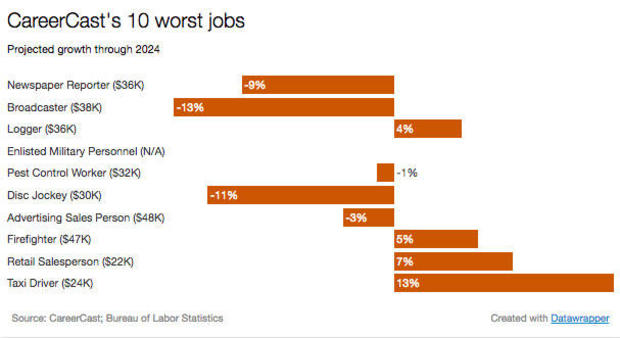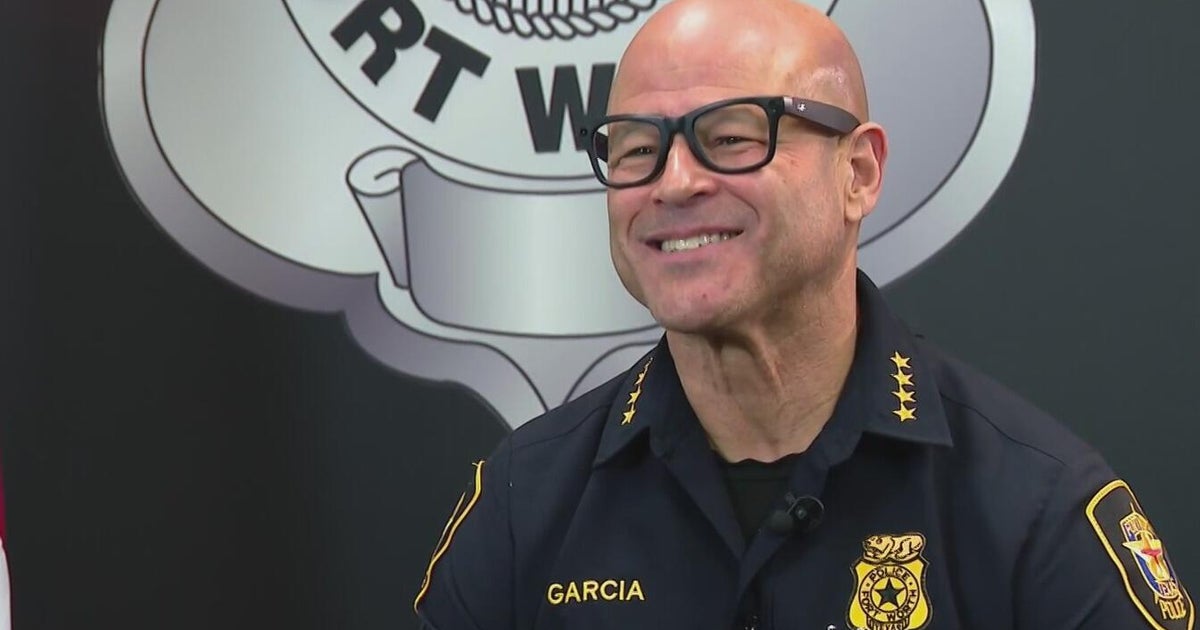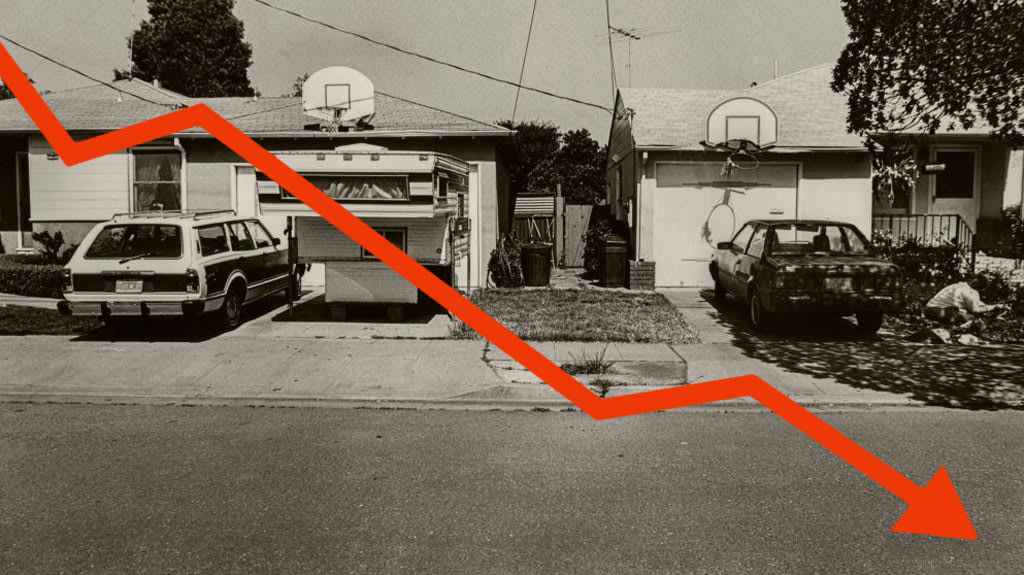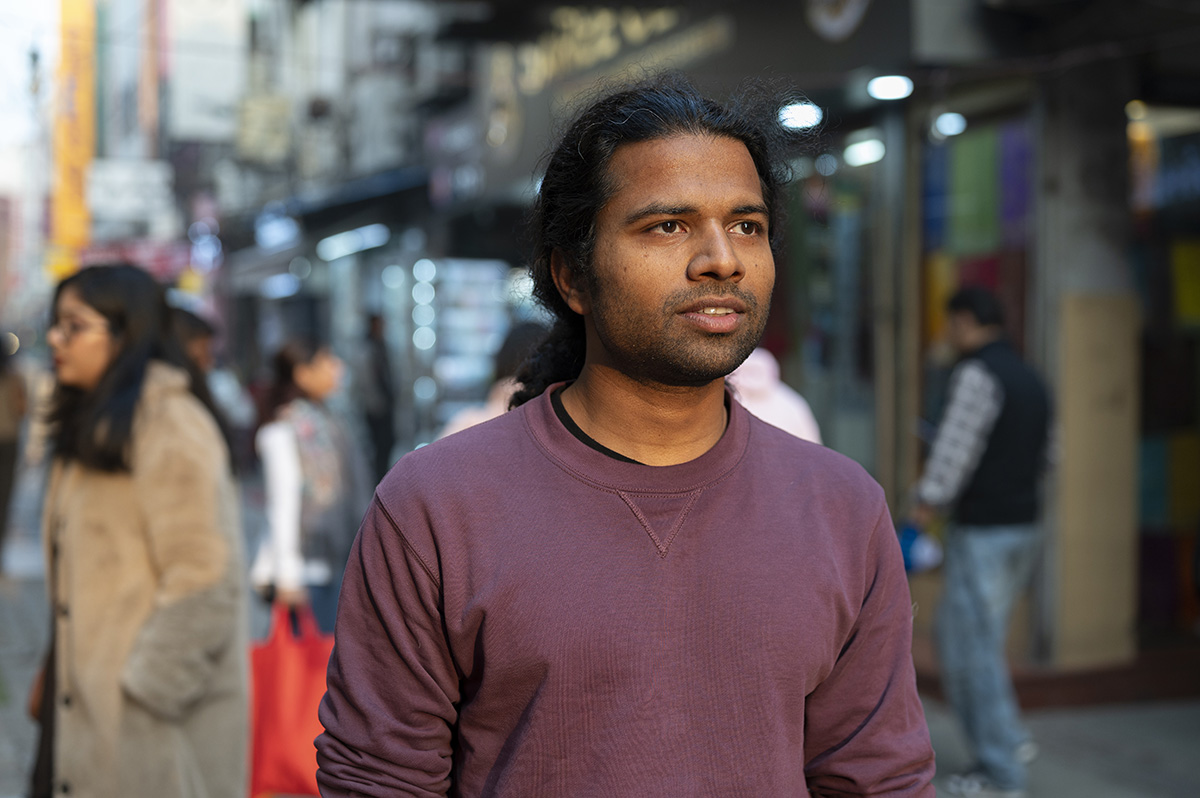Ranking the best and worst jobs in the U.S.
It doesn't take a statistician to understand why statisticians might enjoy their work.
Drawing on federal labor data, CareerCast ranks the profession as the best job of 2017, citing the low stress, "very good" work environment and high median salary of $80,110. Also making the the top 20, out of a total of 200 jobs rated by the career-services firm, include other number-crunching careers such as mathematician, data scientist and actuary.
Others to rank near the top were university professor, audiologist and dental hygienist (see list of best and worst jobs at bottom).
According to the American Statistics Association, the number of U.S. college graduates with bachelor's degrees in statistics has surged more than 300 percent since the 1990s. Universities have had to revamp their programs in recent years to meet the growing demand from employers for people with expertise in statistics.
Bureau of Labor Statistics data show that demand for statisticians is expected to surge 34 percent in the decade ending in 2024, much faster than the 7 percent increase expected for all other professions.
College professor ranks No. 6 on CareerCast's list of best jobs, even though landing a full-time job in academia is difficult given that many universities increasingly rely on part-time adjunct instructors.
So what kind of work does CareerCast say is on the opposite end of the spectrum when it comes to things like stress and job prospects? The worst career is newspaper reporter, whose ranks have been decimated for more than a decade as ad revenue falls amid the shift from print to online media.
Broadcasters ranked second among worst jobs, followed by loggers, enlisted military personnel and pest control workers.
Following is CareerCast's list of best and worst jobs as ranked by work environment, pay, stress and employment prospects. The median salary for each job is noted in parentheses.
